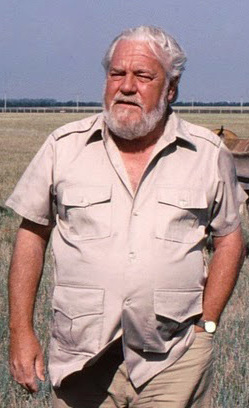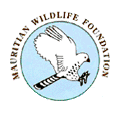
Gerald Malcolm Durrell OBE was an Indian-born British naturalist, writer, zookeeper, conservationist, and television presenter. He was born in Jamshedpur in British India, and moved to England when his father died in 1928. In 1935 the family moved to Corfu, and stayed there for four years, before the outbreak of World War II forced them to return to the UK. In 1946 he received an inheritance from his father's will that he used to fund animal-collecting trips to the British Cameroons and British Guiana. He married Jacquie Rasen in 1951; they had very little money, and she persuaded him to write an account of his first trip to the Cameroons. The result, titled The Overloaded Ark, sold well, and he began writing accounts of his other trips. An expedition to Argentina and Paraguay followed in 1953, and three years later he published My Family and Other Animals, an account of his years in Corfu. It became a bestseller.

Marwell Zoo is a 140-acre (57 ha) zoo situated in Colden Common near Winchester, in the English county of Hampshire. It is owned and run by the registered charity Marwell Wildlife. The zoo is home to 1,208 animals of 149 species. The charity undertakes a range of educational and conservation activities, with a particular focus on Africa in addition to work from its base.

Jersey Zoo is a zoological park established in 1959 on the island of Jersey in the English Channel by naturalist and writer Gerald Durrell. It is operated by the Durrell Wildlife Conservation Trust. It has approximately 169,000 visitors per year.

Lee McGeorge Durrell is an American naturalist, author, zookeeper, and television presenter. She is best known for her work at the Jersey Zoological Park in the British Channel Island of Jersey with her late husband, Gerald Durrell, and for co-authoring books with him.

Trinity is one of the twelve parishes of Jersey in the Channel Islands. It is 5.8 kilometres (3.6 mi) north of St Helier. It has a population of 3,156. The parish covers 6,975 vergées (12.3 km2 [4.7 sq mi]). Les Platons in the north of the parish is the highest point in Jersey. The parish borders St John, St Helier, St Saviour and St Martin.

Les Augrès Manor is a manor house on La Profonde Rue in the Vingtaine de Rozel in the parish of Trinity in Jersey. The present building mostly dates from the 19th century, although the site has medieval origins. It is a listed building.

The Mauritian Wildlife Foundation (MWF) is an independent, non-governmental, non-profit conservation agency working in Mauritius and the Outer Islands to save threatened endemic local flora and fauna.
The Gerald Durrell Endemic Wildlife Sanctuary, also known as GDEWS, is an animal sanctuary founded in 1984, in Western Mauritius. It is an area closed off to the public, in the Black River Gorge region, which is densely forested, and is used for breeding rare, endemic Mauritian species. Among the endangered species in the sanctuary is the Mauritius kestrel, once the rarest bird in the world with only 4 members left. It has been successfully bred and the population has now reached the capacity of Mauritius.

Jeremy John Crosby Mallinson was an English conservationist and author associated with Jersey Zoo and the Durrell Wildlife Conservation Trust, where he was director.

The World Association of Zoos and Aquariums (WAZA) is the "umbrella" organization for the world zoo and aquarium community. Its mission is to provide leadership and support for zoos, aquariums, and partner organizations of the world in animal care and welfare, conservation of biodiversity, environmental education and global sustainability.

The Madagascar Fauna and Flora Group(MFG) is an international consortium of zoos and other conservation agencies which pool resources to help conserve animal species in Madagascar, through captive breeding programs, field research programs, training programs for rangers and wardens, and acquisition and protection of native habitat in Madagascar. It is a non-governmental organization working in conjunction with the Ministry of Water, Forests, and the Environment, Government of Madagascar. It is the organization behind the Save the Lemur campaign and is headquartered at the Saint Louis Zoo.

The Palm Beach Zoo & Conservation Society is a non-profit zoological organization located at Dreher Park in West Palm Beach. The zoo houses hundreds of animals, many of them endangered, within 23-acres of lush tropical habitat. The Palm Beach Zoo & Conservation Society is a member of the Association of Zoos and Aquariums and the World Association of Zoos and Aquariums.

Livingstone's fruit bat, also called the Comoro flying fox, is a megabat in the genus Pteropus. It is an Old World fruit bat found only in the Anjouan and Mohéli islands in the Union of the Comoros in the western Indian Ocean.

Newquay Zoo is a zoological garden located within Trenance Leisure Park in Newquay, England. The zoo was opened in Cornwall on Whit Monday, 26 May 1969 by the local council. It was privately owned by Mike Thomas and Roger Martin from 1993 until 2003. In August 2003 Stewart Muir became the new Director and the zoo became part of the Whitley Wildlife Conservation Trust, alongside Paignton Zoo and Living Coasts. The zoo is part of a registered charity, and was awarded various South West and Cornwall 'Visitor Attraction of The Year' and 'Sustainable Tourism' awards for excellence in 2006, 2007 and 2008. Newquay Zoo is now run as part of the Wild Planet Trust, the new name for the Whitley Wildlife Conservation Trust.

The Rodrigues flying fox or Rodrigues fruit bat is a species of bat in the family Pteropodidae, the flying foxes or fruit bats. It is endemic to Rodrigues, an island in the Indian Ocean belonging to Mauritius. Its natural habitat is tropical lowland forests. The bats are sociable, roost in large groups during the day and feed at night, squeezing the juice and flesh out of fruits. They are hunted by humans for food and their numbers have been dwindling, and the International Union for Conservation of Nature has rated the species as being "endangered". In an effort to preserve them from extinction, some bats have been caught and are being bred in various zoos around the world.

The Rare Species Conservation Centre (RSCC) was a conservation centre and zoological gardens situated just outside Sandwich in Kent, England, operated by The Rare Species Conservation Trust, a UK registered charity. Its purpose was to educate visitors and create awareness of the plight of some of the world’s lesser-known rare and endangered species of animal. It was home to rare and unusual animals. It closed due to lack of funds on 31 August 2015.
Carl Gwynfe Jones, MBE is a Welsh conservation biologist, who has been employed by Durrell Wildlife Conservation Trust since 1985, and a founding member (1984) and current scientific director of Mauritian Wildlife Foundation (MWF). Additionally he is Chief Scientist at Durrell Wildlife Conservation Trust, and an honorary professor in ecology and conservation biology at the University of East Anglia. Often outspoken on the importance of knowing your species and using intuition, empathy and practical knowledge over dogmatic education, Jones is best known for his work in recovering the Mauritius kestrel from just four individuals in 1974, to an estimated 400. Working in the Mascarene Islands since 1979, Jones has led five successful bird restoration projects where the starting population has numbered less than 12 individuals; as a consequence Mauritius has averted more bird extinctions than any other country. Jones has pioneered the use of ecological or taxon replacements to fill the ecological roles of extinct animals and successfully restored levels of endemic vegetation to previously denuded islets. Jones' work has been highlighted in Douglas Adams and Mark Carwardine's 1990 radio documentary Last Chance to See, along with its accompanying book, as well as David Quammen's 1996 book The Song of the Dodo: Island Biogeography in an Age of Extinctions.















